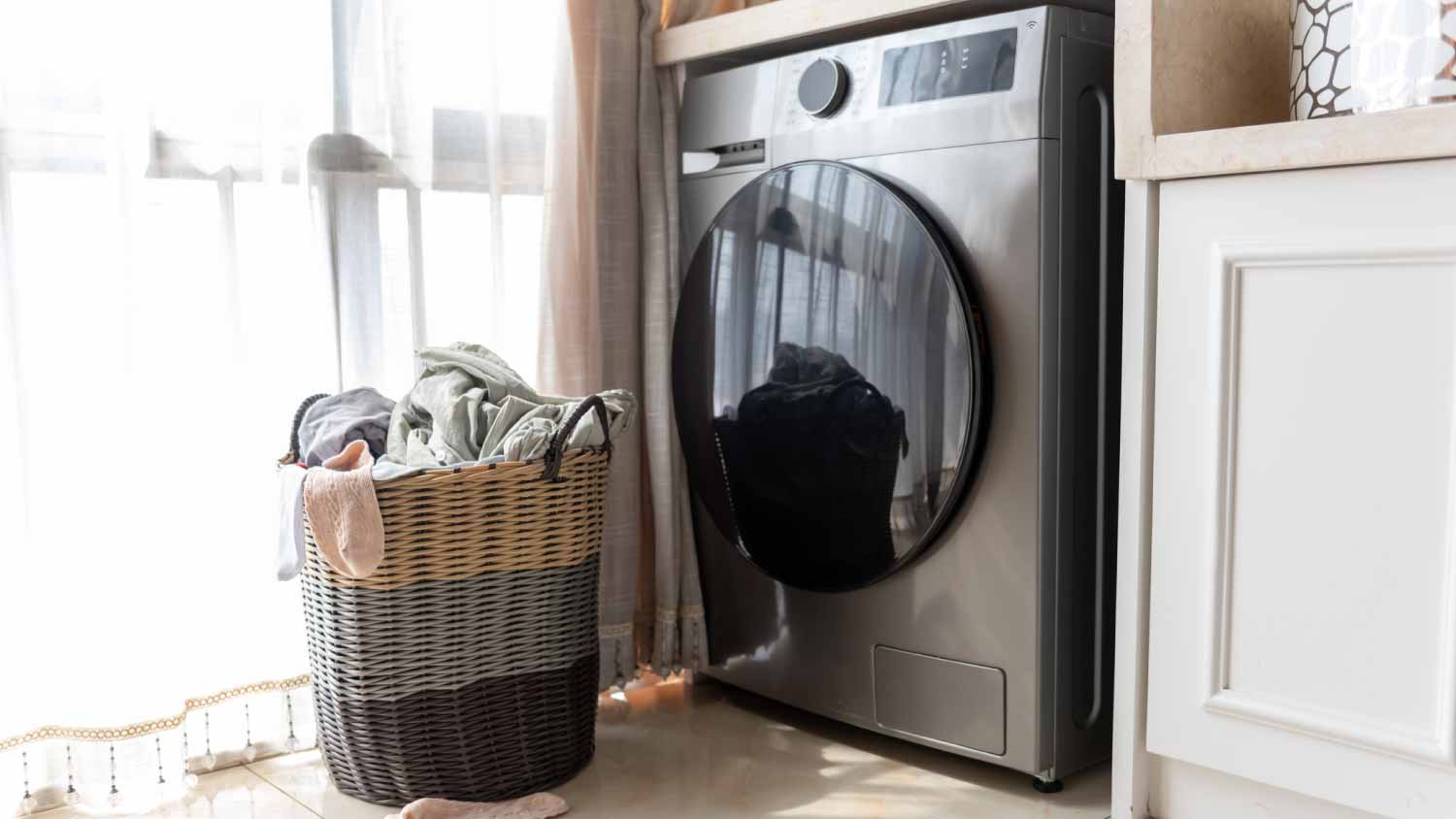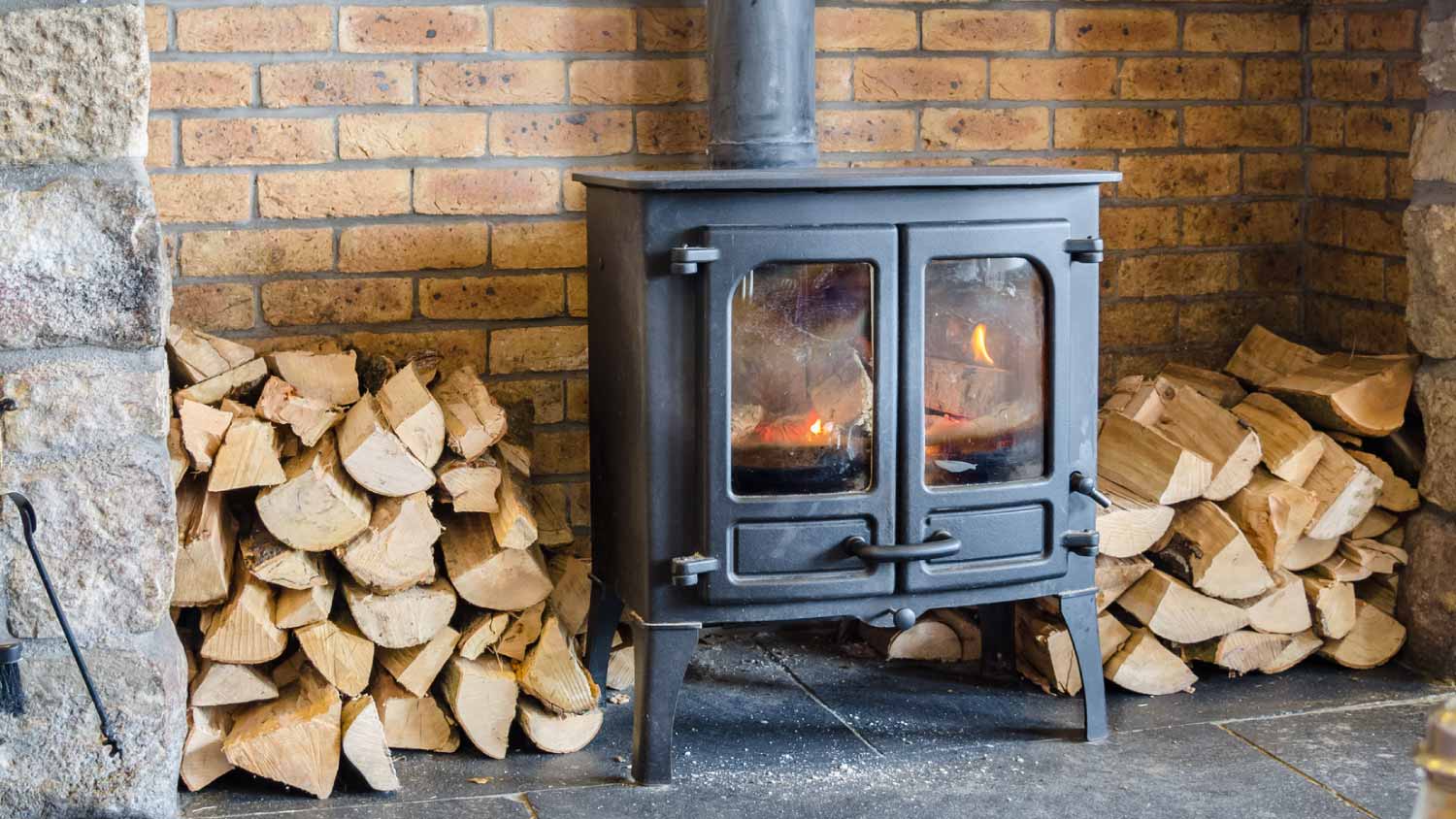How to Determine Washer Box Height in Your Laundry Room
Keep connections within reach


The standard washer box height is 42 to 48 inches.
The washer box height should be easily accessible for the average homeowner.
Local building codes may dictate the location of a washer box.
Popular washer brands will recommend washer box heights for their specific models.
A washer box often goes unnoticed but plays a pivotal role in keeping your laundry room safe and convenient for everyday tasks. Knowing how to determine washer box height goes beyond aesthetics, with accessibility, functionality, and building code compliance guiding their placement. Learn the best way to calculate washer box height for your laundry space.
What to Know About Washer Box Access
A washer box is a recessed plumbing fixture installed in laundry rooms to organize and conceal the water supply valves and drainage connections for washing machines. Featuring hot and cold water shut-off valves and a drain connection, the box helps manage these hookups. Housing these connections within the wall helps prevent water damage and keeps the laundry area clutter-free.
You should put a washer box above the washing machine rather than behind it. Easy access to the washer outlet box is crucial for dealing with leaks and performing maintenance. It allows you to turn off the water supply and remove the washing machine. It's also simpler to attach or detach hoses as needed.
What Is the Standard Washer Box Height?
The standard height for a washer box is between 42 and 48 inches from the floor. Suitable for most front-loading and top-loading washing machines, the height offers easy access to the water supply and drainage connections. The design is convenient for operating the valves and performing maintenance without excessive bending or reaching.
Washer Box Height by Washing Machine Type

The washer outlet box height may vary depending on the type of washing machine. However, you should stay within the standard height, regardless of your washer type. If and when you upgrade your washer, your new machine may feature different dimensions.
If you want to create a clean look for your laundry room, you can position your washer outlet box according to the type of washing machine you have.
Front-Loading Washing Machine
The average height of front-loading washing machines is between 33 and 39 inches. Washer boxes for this type of dishwasher can range between 40 and 42 inches from the floor.
Top-Loading Washing Machine
Top-loading washing machines feature heights between 36 and 42 inches. Since washer outlet boxers are recessed, there's no need to worry about clearance of the top-loading door. The washer box for a top-loading dishwasher can be installed 37 to 45 inches from the floor.
Compact Washing Machine
Compact washing machines are designed specifically for smaller living spaces or apartments. These units feature an average height between 33 and 36 inches. The washer box should be between 34 and 39 inches from the floor.
Stackable Washing Machine
Stackable washer and dryer systems feature a front-loading method that ranges between 74 and 83 inches in height. Unlike other types of washing machines, it doesn't make sense to place the washer outlet box above the top machine as it's out of reach for the average homeowner. Instead, the washer box can be placed on the wall beside the machine at the standard height between 42 and 48 inches from the floor.
Large Capacity Washing Machine
Built to handle large loads of laundry, large-capacity washing machines can be either front-loading or top-loading. Front-loading large-capacity washers average 38 to 40 inches in height, while top-loading large-capacity machines average 36 to 42 inches in height. Washer boxes for this type of washer can range between 40 and 45 inches from the floor.
How to Calculate Washer Box Height
The type of washing machine used plays the biggest factor in determining washer box height. Different brands feature their own height requirements for optimal water supply and drainage connection access.
The washer outlet box should be easily reachable to operate the water valves without excessive bending or stretching. Consider the overall design and layout of the laundry room, including the placement of cabinetry, countertops, and any platforms or pedestals for the washer.
Local building codes and regulations may also dictate specific installation heights. When in doubt, you can call a local washing machine repair pro to ensure the height meets all requirements.
What to Do If You Have the Wrong Washer Box Height
A washer box that's inaccessible or has water flow problems is likely in the wrong place. In some cases, minor adjustments, like using longer hoses or repositioning the washing machine, will temporarily fix the issues. However, these solutions are not ideal for long-term use.
To properly reposition your washer box, you should cut into the drywall to access the plumbing behind the box. Turn off the water supply to prevent leaks before carefully detaching the existing washer box and reconfiguring the plumbing lines to fit the new height. This may require additional plumbing materials, such as extension pipes or new fittings. Homeowners who are uncomfortable with DIY plumbing projects should hire a plumber for assistance.



.jpg?impolicy=leadImage)

- Appliance Repair Companies
- Washing Machine Repair
- Dryer Repair
- Refrigerator Repair
- Dishwasher Repair
- Oven Repair
- Wood & Pellet Stove Repair
- Freezer Repair Services
- Wood Stove Services
- Gas Stove Repair
- Emergency Appliance Repair Companies
- Ice Maker Repair
- Gas Appliance Repair
- GE Appliance Repair
- GE Refrigerator Repair
- GE Dryer Repair
- GE Dishwasher Repair
- GE Washing Machine Repair
- Samsung Appliance Repair
- Samsung Refrigerator Repair
- Samsung Dryer Repair
- Samsung Washer Repair
- Samsung Dishwasher Repair
- Samsung Oven Repair
- Whirlpool Repair
- Whirlpool Refrigerator Repair
- Whirlpool Washer Repair
- Whirlpool Dryer Repair
- Whirlpool Oven Repair
- Maytag Appliance Repair
- Maytag Refrigerator Repair
- Maytag Washer Repair
- Maytag Dryer Repair
- Maytag Dishwasher Repair
- Kitchenaid Appliance Repair
- Kitchenaid Oven Repair
- Kitchenaid Refrigerator Repair
- Kenmore Appliance Repair
- Kenmore Dishwasher Repair
- Kenmore Washer Repair
- Kenmore Dryer Repair
- LG Refrigerator Repair
- Bosch Appliance Repair
- Kenmore Refrigerator Repair
- LG Appliance Repair Services
- GE Microwave Repair
- Electrolux Appliance Repair
- Electrolux Washer Repair
- Kitchenaid Dishwasher Repair Services
- Wood Stove Inspection
- Dishwasher Installation
- Trash Compactor Repair










